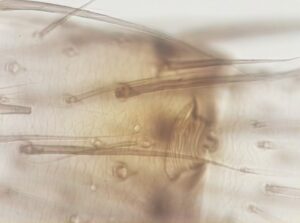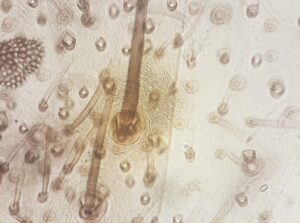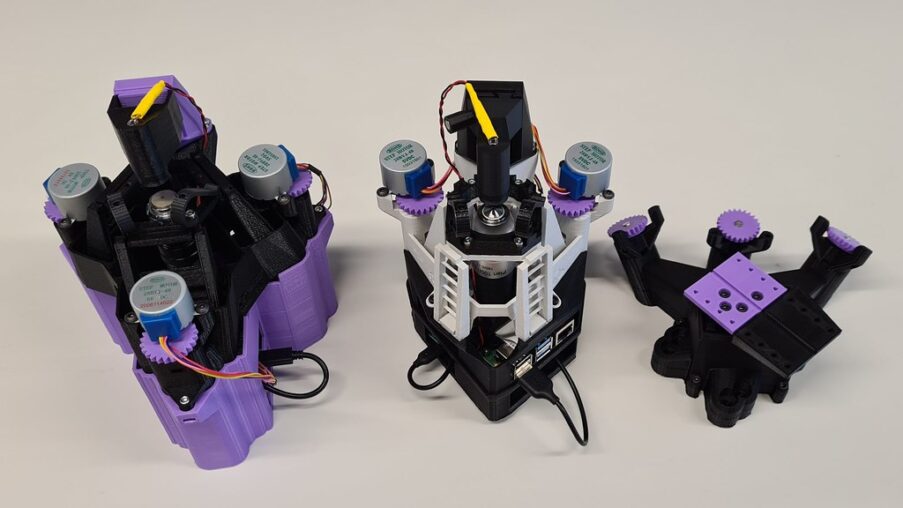The OpenFlexure Project is an open-source initiative that provides high-precision mechanical positioning tools accessible to anyone with a 3D printer. It focuses on developing scientific hardware such as microscopes and micromanipulators, enabling low-cost, customisable solutions for research and education. The project includes designs like the OpenFlexure Microscope and various mechanical stages, all supported through community collaboration on platforms like GitLab and the OpenFlexure Forum. The OpenFlexure Microscope project began at the University of Bath as part of a broader initiative to develop open-source scientific tools.
The project is drive by the need for accessible, reproducible, and locally manufacturable laboratory equipment. The team focused on microscopy due to its relevance across disciplines such as biology, materials science, and medical diagnostics.

The project’s foundation relied on additive manufacturing techniques, specifically 3D printing, to produce microscope components, enabling decentralised production and reducing reliance on proprietary supply chains. The design incorporated standard optical components and Raspberry Pi-based imaging systems, allowing for modularity and scalability. Early iterations of the microscope were tested in academic settings and community labs. Feedback from users in diverse geographic regions informed improvements in mechanical stability, optical alignment, and software integration. The team prioritised documentation and reproducibility, publishing their designs and methods under open licenses. Growth of the project accelerated through collaborations with international partners. Institutions in sub-Saharan Africa, Southeast Asia, and Latin America adopted the microscope for research and education. These deployments highlighted the importance of local adaptation and training, leading to the development of community support forums and multilingual resources. The OpenFlexure team engaged with global networks to expand its reach. Participation in events hosted by Global Innovation Gathering and other open hardware communities facilitated knowledge exchange and peer review, contributing to the refinement of both technical and governance models.
Two of the project’s milestones were its selection as a Solver Team in MIT Solve’s 2024 Global Health Equity Challenge and further its nomination on the World Health Organisation compendium of innovative health technologies for low-resource settings, in 2024. These recognitions underscored the microscope’s potential for medical diagnostics, particularly in resource-constrained environments. Ongoing evaluations are being conducted for malaria and cancer screening applications. Despite the challenges encountered by the team, such as ensuring consistent print quality across different 3D printers, managing software dependencies, and navigating regulatory frameworks for medical devices, issues were addressed through iterative design, automated calibration routines, and engagement with health authorities. As a result, the OpenFlexure Microscope is now used in over 50 countries. Its deployment spans universities, NGOs, and citizen science initiatives. Recently, it became supported by the Humanitarian Technology Trust, a UK charity established to help OpenFlexure and similar projects amplify their real world impact and outcomes.
Community participation remains central to the project’s sustainability. Contributors can engage through the OpenFlexure forum, GitLab repositories, and documentation hubs, taking on roles such as hardware testing, software development, translation, and outreach. As a result, educational institutions worldwide have incorporated the microscope into curricula for physics, biology, and engineering. Workshops and hackathons have been organised to train students and researchers in the assembly and usage of scientific instruments, promoting hands-on learning and fostering innovation in scientific instrumentation.
The device supports both manual and motorised versions, with options for remote control and image analysis. Integration with cloud platforms and machine learning tools is under active development. As an Open Source Hardware project, the team encourages replication and modification of the design to suit local needs. The project’s governance model emphasises transparency and distributed leadership, with decisions made through consensus, and contributions tracked publicly. Funding has been sourced from academic grants, philanthropic organisations, and community donations. The team maintains a press pack and publication archive to support media engagement and scholarly citation.
Julian Stirling, a member of the OpenFlexure core team and the Global Innovation Gathering network, stated: “OpenFlexure is not just a microscope—it’s a platform for collaborative engineering. By sharing our designs and methods, we enable others to build, adapt, and improve scientific tools. This is a collective effort, and being part of GIG helps us connect with innovators who share our commitment to open technology”.




The OpenFlexure Microscope continues to evolve through iterative design and community feedback. Its trajectory illustrates the potential of open hardware to transform access to scientific tools and foster global collaboration. The project invites participation from individuals and institutions interested in advancing equitable research infrastructure.
To build and start using an OpenFlexure Microscope, here’s a quick guide to get you going:
- Build a Microscope – A guide to printing and assembling an OpenFlexure Microscope.
- Buy a Microscope – Buy a microscope or kit from a vendor near you.
- Install the Software – Download and install the software to control your microscope.
- Use your Microscope – Get started with it.
Detailed build instructions are available on the OpenFlexure project site.
Anyone interested in contributing to open science and distributed innovation is encouraged to assemble their own OpenFlexure Microscope. The project provides comprehensive build instructions, software packages, and community support to facilitate local fabrication and deployment. By participating, individuals and organisations can engage in collaborative development, share insights, and help expand access to scientific tools. Joining the OpenFlexure community offers opportunities to contribute to hardware design, software refinement, and global outreach efforts for an open and accessible science.


